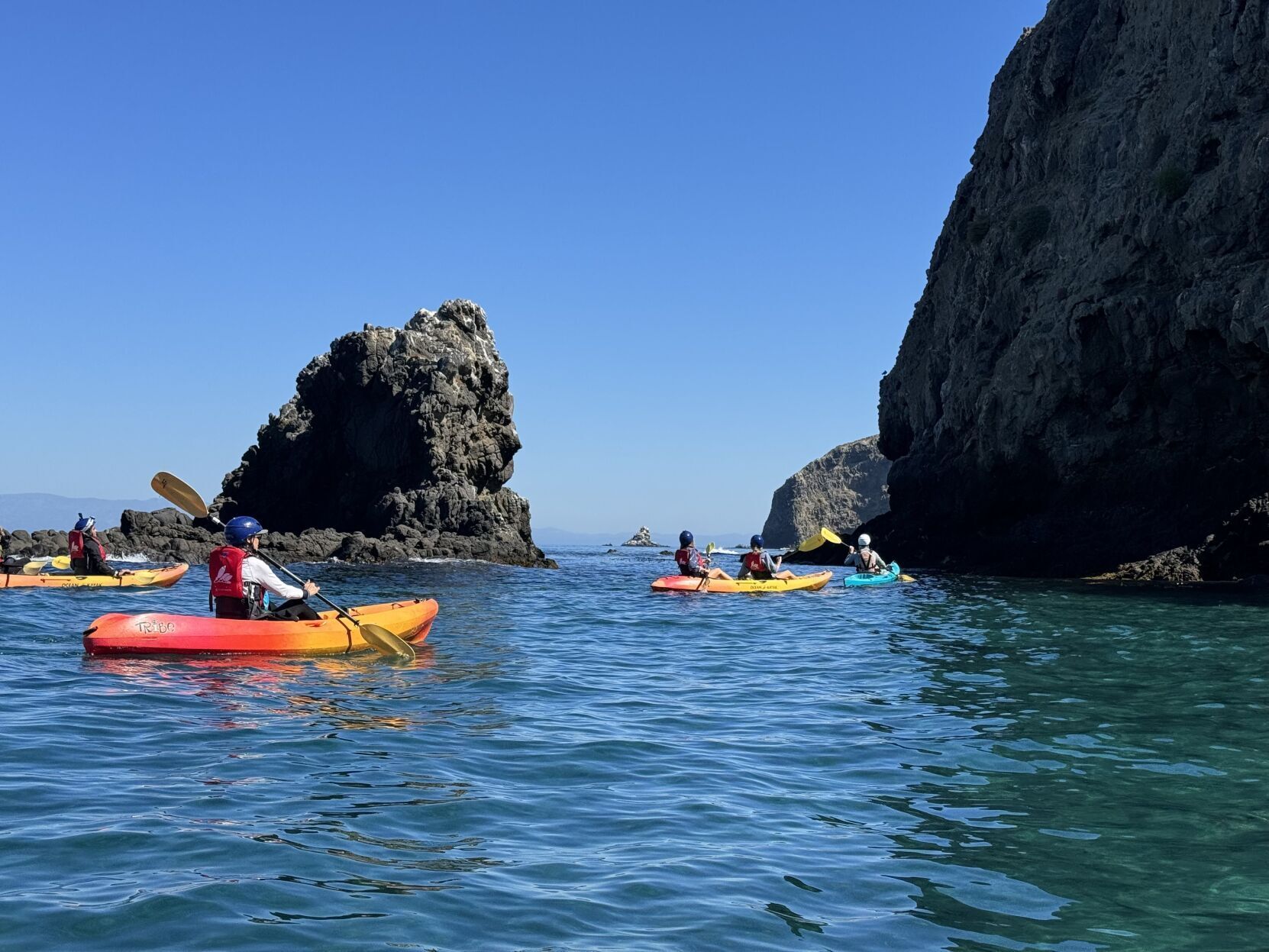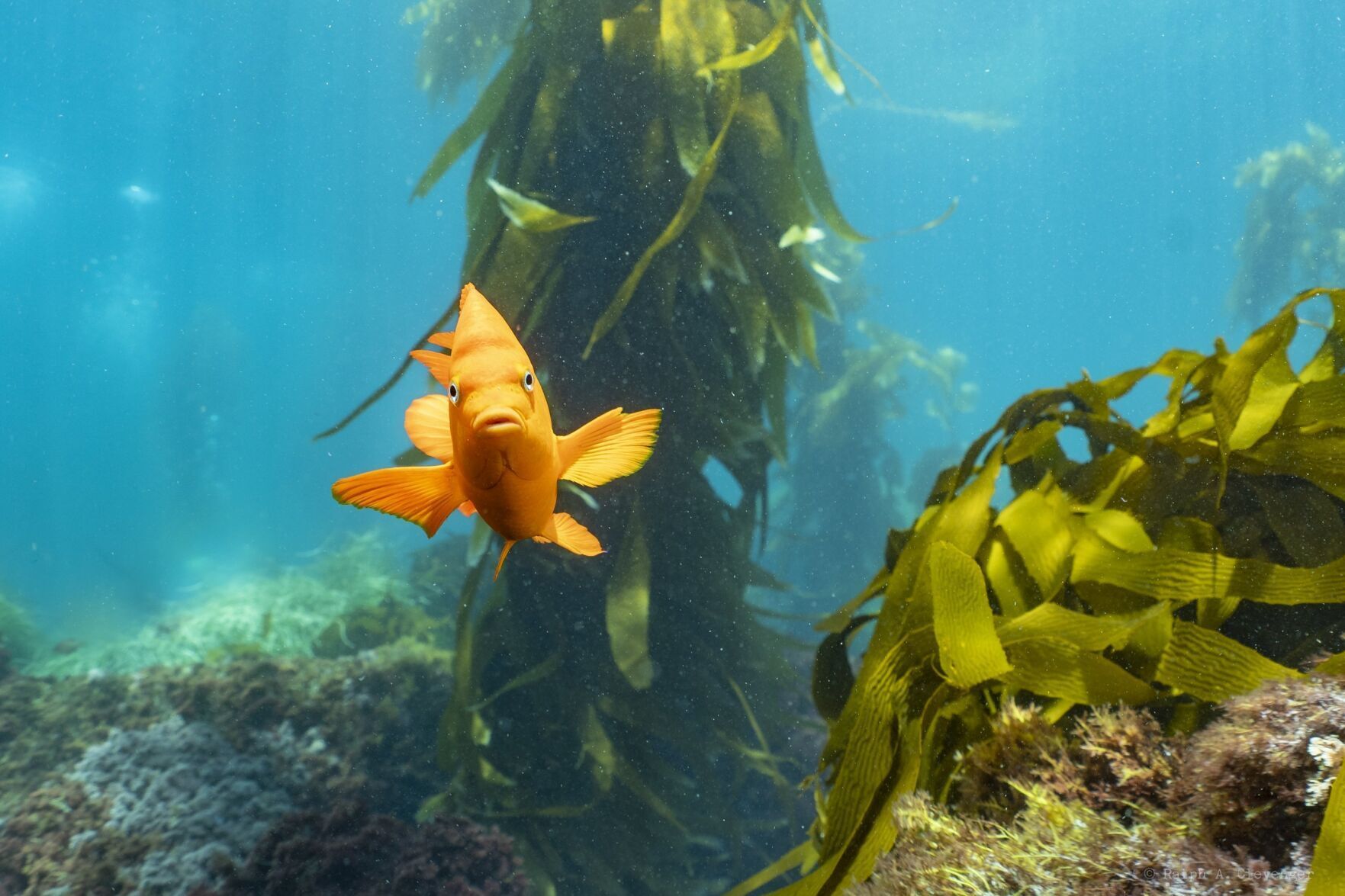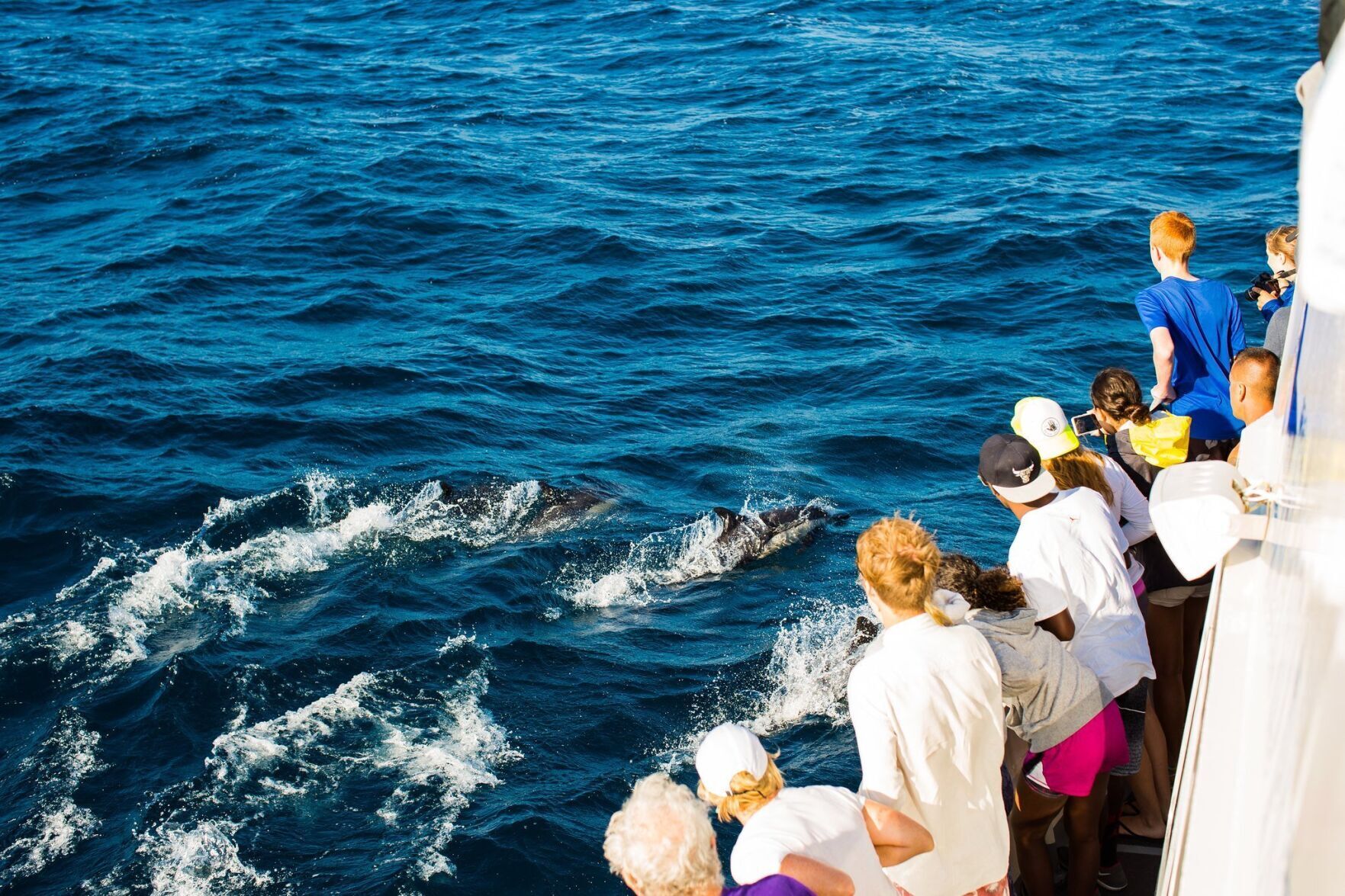|
|

Volcanic sea cliffs and sea stacks imbue Channel Islands National Park with a stark beauty. By Blake Ford
Spools of kelp unfurled across the surface of the water in front of my kayak. I easily paddled over their yellow-green blades, peering down into the clear water for orange garibaldi or the grey, shadowy body of a leopard shark.
The scenery along Anacapa Island was unexpected: sea arches, rocky cliffs spattered with bird guano, squadrons of pelicans dive-bombing the water for food. It was hard to believe I was off the coast of California, just about 160 kilometres from Los Angeles, exploring Channel Islands National Park with my husband and teenage son.
Dubbed “North America’s Galapagos” because of its diversity of plants and animals — including endemic species you won’t see anywhere else — Channel Islands is one of California’s least-visited national parks. Only about 300,000 tourists come annually, partly because it’s only accessible by boat.
In the coastal city of Oxnard, we boarded our vessel, the Sunfish, in the Channel Islands Harbor, and settled in for the hour-long ride across the Santa Barbara Channel to the park, which is also a marine sanctuary that protects 3,807 square kilometres of ocean water surrounding the park’s five islands.
Our destination was small Anacapa Island, where we’d launch our kayaks and paddle along the north coast while hugging volcanic cliffs to observe seabirds and explore caves formed by the relentless erosive force of waves.

Volcanic sea cliffs and sea stacks imbue Channel Islands National Park with a stark beauty.
By Blake Ford
Soon, our captain Garrett Kababik, co-founder of Channel Islands Expeditions, spotted a humpback whale. Mesmerized, we watched it exhale forcefully through its blowhole and then dive, dismissing us with that characteristic whale-tail wave.
In fall, humpbacks fatten up in the nutrient-rich Santa Barbara Channel, which was designated a Whale Heritage Area last fall. They’re one of 27 species of whales and dolphins found in these waters — a migration route so important, it’s been dubbed a “whale superhighway” — and they keep company with other marine mammals like harbour seals and California sea lions.
Easier to spot were the seabirds, whose clamorous calls filled the air and whose guano imbued it with a pungent, earthy odour as we drew closer to land.
“Anacapa has always been pretty much owned by the birds,” says guide and trip leader Spencer Frey. It’s home to the largest breeding colony of California brown pelicans in the Western U.S., for example, and the largest breeding colony of western gulls in the world.

A sea arch with pelicans in Channel Islands National Park.
By Lisa Kadane
But the most surprising natural treasure didn’t come into view until we had reached our put-in spot and eased into the kayaks. A few strokes from the Sunfish and we were floating over the canopy of a thriving kelp forest. Waving “trees” of California giant brown kelp plunged 100 feet or more to the rocky bottom, anchored by a holdfast too far down to see.
Over 1,000 marine plants and animals rely on kelp beds for food and protection, making them one of the most biodiverse ecosystems on the planet, along with coral reefs and rainforests. The size and health of the kelp forests are part of what makes this place a marine reserve, says Frey.
Kelp forests are also important climate stabilizers — they produce oxygen and hold carbon, and slow the swell energy of waves, which protects the land and prevents erosion. But they’re also susceptible to climate change and feel the impact when nature gets thrown off balance — an overabundance of sea urchins, caused by a decline in sea otters, can destroy a kelp forest, for example. (Channel Islands Expeditions is a certified B Corp that has supported sea urchin culling efforts to help curb kelp degradation.)

Garibaldi, California’s official state fish, in a kelp forest.
By Channel Islands Expeditions
We took it all in as we paddled east, kayaking beneath sea arches and braving the choppy water inside dark, echoey caves. Along the way we picked up floating flotsam, including Mylar balloons, which break down in the sun and turn into microplastics that fish mistake for food. “We aim to retrieve any trash or plastic on every expedition,” Kababik explains back on the boat.
Finally, I took my own plunge, putting on a mask, snorkel and fins before jumping in. Soon, an astonishing sight made me forget the water’s chilly bite: hundreds of kelp giants swaying in symphony with the current.
Beneath the surface I saw what eluded me from the kayak: fish like kelp bass and garibaldi playing hide and seek between the maze of fronds. I let myself drift with the seaweed, feeling calm, serene and very, very small.
To end the day, there was one more experience that could only be described as surreal: a pod of hundreds of common dolphins accompanied us on the ride back to Oxnard. They swam ahead of the prow and to either side of the vessel, cavorting in the wake, escorting us back to civilization and away from this special, protected place.

Dolphins are a common sight in Channel Islands National Park and Santa Barbara Channel.
By Kamilo Bustamante Visit Ventura
Just the facts
Visit nps.gov/chis for the National Park Service’s trip-planning tips for the Channel Islands, including when to go and what to do. Public boat transportation is operated by Island Packers, which travels year-round to Santa Cruz and Anacapa, and seasonally to the outer islands of Santa Rosa, San Miguel and Santa Barbara. Private boat companies specializing in the area include Channel Islands Expeditions, which runs its Epic Sea Caves of Anacapa Combo trip between May and November.
Lisa Kadane travelled as a guest of Visit California and Visit Oxnard, which did not review or approve this article.
来源链接:
https://www.toronto.com/things-to-do/travel/north-america-s-galapagos-is-home-to-wildlife-species-you-won-t-see-anywhere-else/article_017057a3-cd67-5be8-8766-b0b366d280af.html
|
|